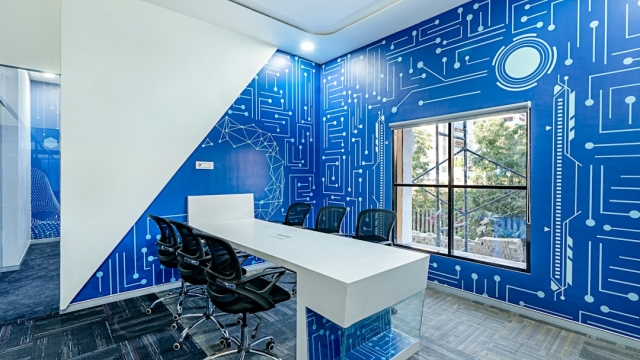The Psychology of Color in the Workplace
Color plays a crucial role in the design and ambiance of office spaces. It has the power to influence mood, productivity, and even creativity among employees. Choosing the right palette for an office environment can create a positive atmosphere that enhances both aesthetics and functionality. This article delves into the psychology of color in the workplace, explores popular office color schemes, and offers tips for selecting the ideal colors for your workspace.
The Psychology of Color in the Workplace
Colors evoke emotions and reactions that can significantly affect workplace dynamics. Understanding the psychological effects of different colors can help businesses create environments that foster productivity and well-being. For instance, blue is often associated with calmness and focus, making it an ideal choice for areas where concentration is essential. Meanwhile, yellow can stimulate creativity and energy, which may be beneficial in collaborative spaces.
Similarly, green represents balance and tranquility, promoting a sense of well-being. This color is frequently chosen for break areas where employees can recharge. On the other hand, red can evoke strong emotions and increase energy levels, but if overused, it may lead to feelings of frustration or agitation. Thus, knowing the implications of each color can guide decision-making when it comes to office color schemes.
Popular Office Color Schemes and Their Effects
When considering office color schemes, it is helpful to explore some popular combinations and their effects. Here are a few well-regarded palettes:
1. Blue and White
This classic combination promotes a sense of calm and professionalism. Blue encourages focus and reduces stress, while white adds a clean and spacious feel to the environment. This scheme works well in corporate offices and areas requiring concentration.
2. Green and Earth Tones
A palette of green with earth tones creates a natural and nurturing environment. This combination not only soothes the mind but also connects employees to nature, which can enhance creativity and reduce fatigue. It is particularly effective in creative spaces and open-plan offices.
3. Yellow and Gray
This modern color scheme balances the cheerful energy of yellow with the neutrality of gray. Yellow can inspire optimism and creativity, while gray serves as a grounding backdrop that keeps the overall look sophisticated. This combination is ideal for collaborative areas and brainstorming zones.
4. Red and Neutrals
While red can be intense, when paired with neutral tones, it can create a dynamic and energetic workspace. This scheme is often used in sales or marketing departments where motivation and enthusiasm are key. Care should be taken not to overuse red to avoid overwhelming the space.
Tips for Choosing the Right Color Scheme for Your Office
Selecting the most suitable office color schemes requires thoughtful consideration of various factors. Here are some practical tips to guide your decision:
- Assess Your Brand Identity: The color scheme should reflect your brand’s values and personality. Consider the emotions and messages you want to convey through your workspace.
- Understand Your Team’s Needs: Engage with your employees to gather insights on their preferences and needs. Employees who feel involved in the decision-making process are more likely to feel comfortable in the space.
- Consider Lighting: Natural and artificial lighting can significantly alter how colors appear in an office. Test color samples in different lighting conditions to ensure they look as intended throughout the day.
- Balance and Harmony: Aim for a harmonious blend of colors. Too many contrasting shades can create visual chaos, while a well-thought-out palette can enhance cohesion throughout the space.
- Incorporate Texture and Patterns: Adding textures and patterns through furniture, wall art, or decor can enrich the visual experience and make the color scheme more dynamic and engaging.
Ultimately, the right office color schemes can significantly impact employee satisfaction and productivity. By understanding the psychological effects of color and thoughtfully selecting palettes that align with both brand identity and employee needs, businesses can create inspiring and effective work environments. For more guidance on creating the perfect office atmosphere, visit Stickerson Wall for creative ideas and solutions.



